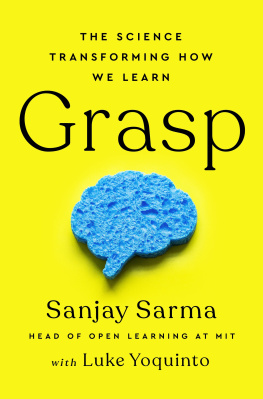
MONETARY FOUNDATIONS OF THE RAJ
In the administration of colonial finances, the monetary policy of the Imperial power relating to their dependencies had tremendous impact on the colonial economy. The British East India Company, in 1835 was able to introduce a universal currency in all its Indian possessions which proved to be a landmark in the economic consolidation of the British rule in India.
This volume presents an account of the monetary policies adopted by the British East India Company by which it was successful in securing full control over money supply the life blood of a monetized economy. This, in turn, affected almost every aspect of Indias colonial economy and played a crucial role in laying the foundation for its colonial subjugation.
In this unique anthology, published studies along with unpublished archival records have been integrated into an overall theme. Together with a comprehensive bibliography-cum-list for further readings this volume is aimed to serve as a veritable reference tool.
Sanjay Garg (b. 1965) is a numismatist and economic historian of international repute. He has extensive research experience in history of South Asia, with specialization in economic and monetary history, currency and coinage, historical architecture, and archival studies. His research findings have been widely published in print and multimedia, and include an edited volume of S.H. Holdivalas numismatic contributions, Studies in Mughal Mint-Towns & Other Essays (2014); and Studies in Indo-Muslim History, 2 vols. (2018).
At present Dr. Garg is posted as the Director, Swami Vivekananda Cultural Centre, Astana (Kazakhstan).
MONETARY FOUNDATIONS
OF THE RAJ
Edited by
SANJAY GARG
First published 2019
by Routledge
2 Park Square, Milton Park, Abingdon, Oxon OX14 4RN
and by Routledge
52 Vanderbilt Avenue, New York, NY 10017
Routledge is an imprint of the Taylor & Francis Group, an informa business
2019 selection and editorial matter, Sanjay Garg; individual chapters, the contributors; and Manohar Publishers & Distributors
The right of Sanjay Garg to be identified as the author of the editorial material, and of the authors for their individual chapters, has been asserted in accordance with sections 77 and 78 of the Copyright, Designs and Patents Act 1988.
All rights reserved. No part of this book may be reprinted or reproduced or utilised in any form or by any electronic, mechanical, or other means, now known or hereafter invented, including photocopying and recording, or in any information storage or retrieval system, without permission in writing from the publishers.
Trademark notice: Product or corporate names may be trademarks or registered trademarks, and are used only for identification and explanation without intent to infringe.
Print edition not for sale in South Asia (India, Sri Lanka, Nepal, Bangladesh, Pakistan or Bhutan)
British Library Cataloguing in Publication Data
A catalogue record for this book is available from the British Library
Library of Congress Cataloging in Publication Data
A catalog record for this book has been requested
ISBN: 978-1-138-28062-5 (hbk)
ISBN: 978-1-315-27190-3 (ebk)
Typeset in Minion Pro 11/13
by Ravi Shanker, Delhi 110 095
Contents
Sanjay Garg
Dietmar Rothermund
J.C. Sinha
Frank Perlin
J.C. Sinha
B.R. Ambedkar
Edgar Thurston
D.B. Mitra
A. Dalrymple
H. Dodwell
C. Ramachandran
Edward Thomas
Anonymous
Sanjay Garg
Dayal Das
Paul Stevens
Themes dealing with both history and numismatics have rarely been integrated in the mainstream historiography of India. For Mughal India, a beginning was indeed made to bridge this gulf (The Imperial Monetary System of Mughal India, 1987). Sadly this noteworthy initiative had no takers amongst historians and numismatists dealing with post-Mughal and colonial India.
While excellent studies, both in the fields of economic, social and political history of India as well as on the contemporary coinage, its production technologies, and mint administration have appeared over the last one and a half centuries, seldom have these two streams intermingled or even intersected. Likewise the enormous historical material available in the form official records, personal narratives, and other contemporary accounts as well as in the archives of the British East India Company and later the Crowns representative government in India remains largely untapped in the numismatic writings dealing with this period. Though a beginning to fill this vacuum was made with the publication of The Coins of the Bengal Presidency (Stevens 2012) and The Sikka and the Raj (Garg 2013), many more studies are needed to evolve a better understanding of the monetary history of India.
This series, therefore, seeks to fill this vacuum by presenting comprehensive readers on the monetary history of India, covering the entire period for which written documentation is available (both from Indian and colonial authorities), i.e. from c. 1300 CE onwards. The individual volumes in this series would be a mix of the published and unpublished research papers as well as the archival sources on different topics, ranging from coinage and paper currency management, to coinage production and circulation, and its effects on financial health of the state, as well as the symbiotic relationship between currency and fiscal management, international trade and overall economy of a nation, to name a few. The actual ratio between the published studies and unpublished documentary sources would, however, vary in each volume and where necessary, translations of non-English sources would be provided. A fresh introduction would integrate these selections into the overall theme. A comprehensive bibliography-cum-list for further readings would be appended to each of these volumes so as to make them a veritable reference tool.
SANJAY GARG
In the administration of colonial finances, the monetary policy of the Imperial power relating to their dependencies had tremendous impact on the colonial economy. The British East India Company, which gradually replaced the tottering Mughal Empire, inherited a chaotic currency system in which a large variety of coins were in concurrent circulation. These coins were of different kinds and denominations, minted at different places on different dates, and had no uniform system of weights and purity whatsoever. For a trading organization that was required to constantly transport money and goods from one part of India to another, and make heavy disbursements in the local currencies for its investments as well as for its numerous military campaigns, the establishment of a standard currency and regulation of its supply was of crucial importance.
The East India Company, therefore, adopted a policy of gradually subsuming the local currencies and replacing them with a uniform imperial currency. After passing a series of regulations dealing with the issues such as the metallic standards (monometallism vs. bimetallism), standard weight and purity of the Companys coins, regularization of the agio (discount), rates of exchange, reform of the coin-production techniques, etc., in 1835 the Company was able to introduce a universal currency in all its Indian possessions. This proved to be a landmark feat that laid the foundation of the monetary integration of India, which, in turn, provided the requisite economic prowess for consolidation of the British rule in India.














